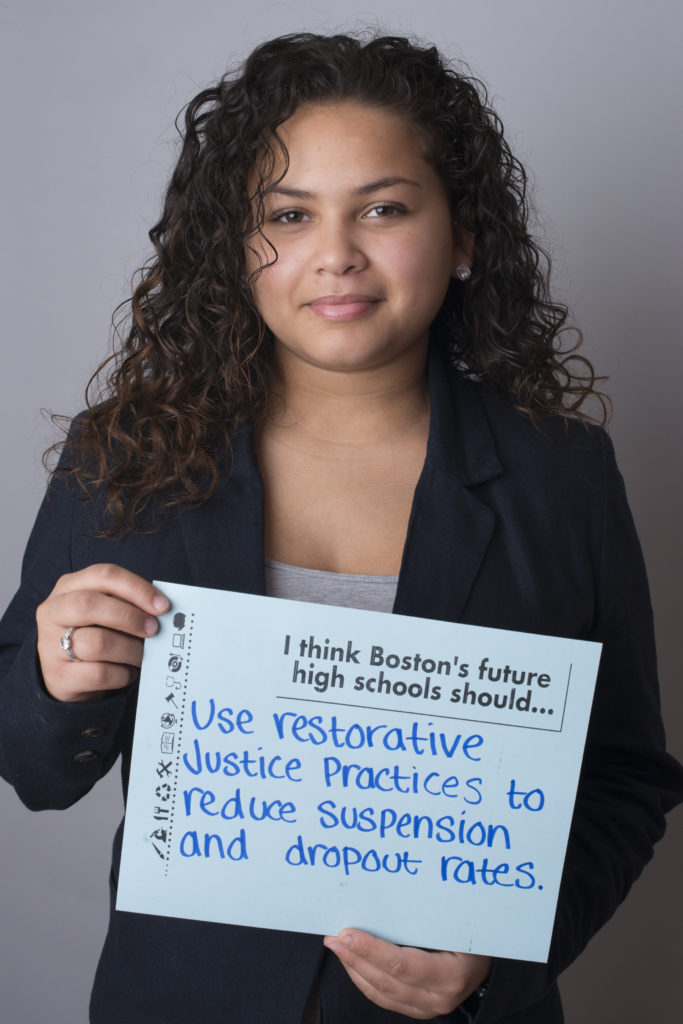
By Nicole María Peña
During the 2011-2012 school year, American students lost almost 18 million days of school due to suspensions.[1] This is just one of the countless disadvantages placed upon students when penalized by school-mandated protocols such as the zero-tolerance policy. This policy mandates punishment against students for offenses made, regardless the seriousness of the behavior. These offenses may include possession of a weapon, arguing with a student, or even talking back to the teacher. Despite these policies and the level of severity, one should realize that no one should be deprived of their education because of their wrongdoings.
Not only does this place a person into a category within society, it then becomes more probable for that person to become suspended or punished again. This type of punishment was enforced to “repair” or “correct” these wrongdoings. Instead, all it’s doing is causing disengagement. In the Harvard Journal of Hispanic Policy, it is explained how research shows that these policies have failed to make schools safer and that they ¨have been linked to an increased likelihood of academic underperformance as well as increased suspension, expulsion and elevated dropout rates.¨[2]
Continuous punishment against someone doesn’t correct their mistake, instead, it leads the person to think they’re an awful person. They will continue making wrong decisions. In the article “Principals Not Police,” The American Press claims that “Students who are taken out of school, or experience it as a punitive and unwelcoming place, are more likely to drop out and become entangled in the criminal justice system.”[3] Consequently, these students are categorized within the “school-to-prison pipeline.” This means that those students are most likely to end up in prison after being kicked out of school or dropping out.
On the other hand, restorative justice is a rehabilitation/healing process that allows the victim and the perpetrator to reconcile. Not only does restorative justice programs provide students with a chance to vent, but to also take responsibility for themselves, forgive, understand, and listen. ¨In many schools, such programs are intent on developing closer relationships among students, teachers and administrators while encouraging young people to think of meaningful reparations for misdeeds¨.[4] All humans have the ability to reconcile, and if you’re constantly being punished for what you’ve done wrong, you won’t ¨develop the inborn capacities to acknowledge the fact that you did hurt someone.¨[5]
Restorative justice programs gather students together to discuss something that was never resolved. According to Matt Davis in his article “Restorative Justice: Resources for schools” ¨the growing number of districts using restorative justice, the programs have helped strengthen campus communities, prevent bullying and reduce student conflicts¨.[6] Furthermore, it is elaborated that ¨early adopting districts have seen drastic reductions in suspension and expulsion rates, and students say they are happier and feel safer¨.[7] The program helps kids talk through their problems in school, fix current conflicts, and avoid ones in the future. This sense of relief and forgiveness may increase the student´s interest in genuinely staying in school.
Some people may say that we do not have enough time during the school day to include restorative justice in the curriculum. Nevertheless, if a program is helping reduce the amount of people leaving school every day, then some thought should go into realizing the benefit it has on students, and on the community as a whole. In the schools that are using this, the academic performance goes up and behavioral problems go down. [8]
All in all, peacemaking does contribute to further a student’s success in life as it teaches you to not hate or hold grudges which may otherwise keep you within the loop of doing so. Instead of leaning towards punishment for someone’s mistake, schools should give students the chance to evaluate their actions, take responsibility for them, and most importantly, find a way to fix or construct the situation.
- Sophia Tesfaye, “Bill O’Reilly Attacks ‘Restorative Justice Programs’ That Reduce Racially Disproportionate School Discipline,” Media Matters for America, March 17, 2015. ↑
- Jennifer Castillo, “Tolerance in schools for Latino students: dismantling the school-to-prison pipeline,” Harvard Journal of Hispanic Policy 26 (July 2014): 43. ↑
- “Principals, Not Police,” America, February 17, 2014, 1. ↑
- Stephen Gray Wallace, “A Circle of Support: Restorative Justice at Summer Camp,” American Camp Association, May 2014, http://www.acacamps.org/resource-library/articles/circle-support-restorative-justice-summer-camp. ↑
- Carolyn Boyes-Watson, in discussion with author, January 15, 2016. ↑
- Matt Davis, “Restorative Justice: Resources for Schools,” Edutopia, last modified October 29, 2015, http://www.edutopia.org/blog/restorative-justice-resources-matt-davis. ↑
- Matt Davis, “Restorative Justice: Resources for Schools.¨ ↑
- Carolyn Boyes-Watson. ↑
You must be logged in to post a comment.